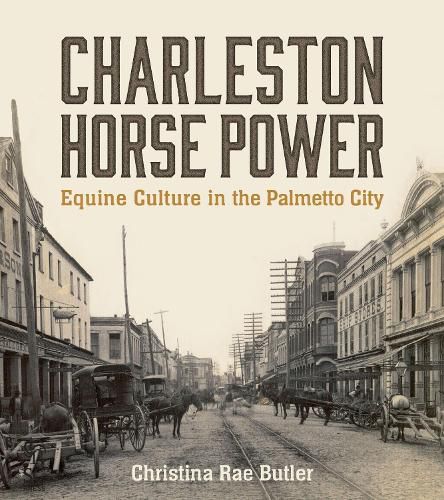Readings Newsletter
Become a Readings Member to make your shopping experience even easier.
Sign in or sign up for free!
You’re not far away from qualifying for FREE standard shipping within Australia
You’ve qualified for FREE standard shipping within Australia
The cart is loading…






Discover the fascinating history and legact of working equines in Charleston, South Carolina.Featuring thorough research, absorbing storytelling, and captivating photographs, Charleston Horse Power takes readers back to an equine-dominated city of the past, in which horses and mules pervaded all aspects of urban life. Author, scholar, and preservationist Christina Rae Butler describes carriage types and equines roles (both privately owned animals and those in the city's streets, fire, and police department herds), animal power in indurstrial settings, regulations for animals and their drivers, horse-racing culture, and Charleston's equine lifestyles and architecture. Butler profiles the people who made their living with horses and mules-from drivers, grooms, and carriage makers, to farriers, veterinarians, and trainters.
Charleston Horse Power is a richly illustrated and comprehensive examination of the social and cultural history and legacy of Charleston's equine economy. Urban historians, historic presercationists, general readers, and Charleston visitors interested in discovering a vital aspect of the city's past and present will enjoy and appreciate this impressive work.
$9.00 standard shipping within Australia
FREE standard shipping within Australia for orders over $100.00
Express & International shipping calculated at checkout
Discover the fascinating history and legact of working equines in Charleston, South Carolina.Featuring thorough research, absorbing storytelling, and captivating photographs, Charleston Horse Power takes readers back to an equine-dominated city of the past, in which horses and mules pervaded all aspects of urban life. Author, scholar, and preservationist Christina Rae Butler describes carriage types and equines roles (both privately owned animals and those in the city's streets, fire, and police department herds), animal power in indurstrial settings, regulations for animals and their drivers, horse-racing culture, and Charleston's equine lifestyles and architecture. Butler profiles the people who made their living with horses and mules-from drivers, grooms, and carriage makers, to farriers, veterinarians, and trainters.
Charleston Horse Power is a richly illustrated and comprehensive examination of the social and cultural history and legacy of Charleston's equine economy. Urban historians, historic presercationists, general readers, and Charleston visitors interested in discovering a vital aspect of the city's past and present will enjoy and appreciate this impressive work.